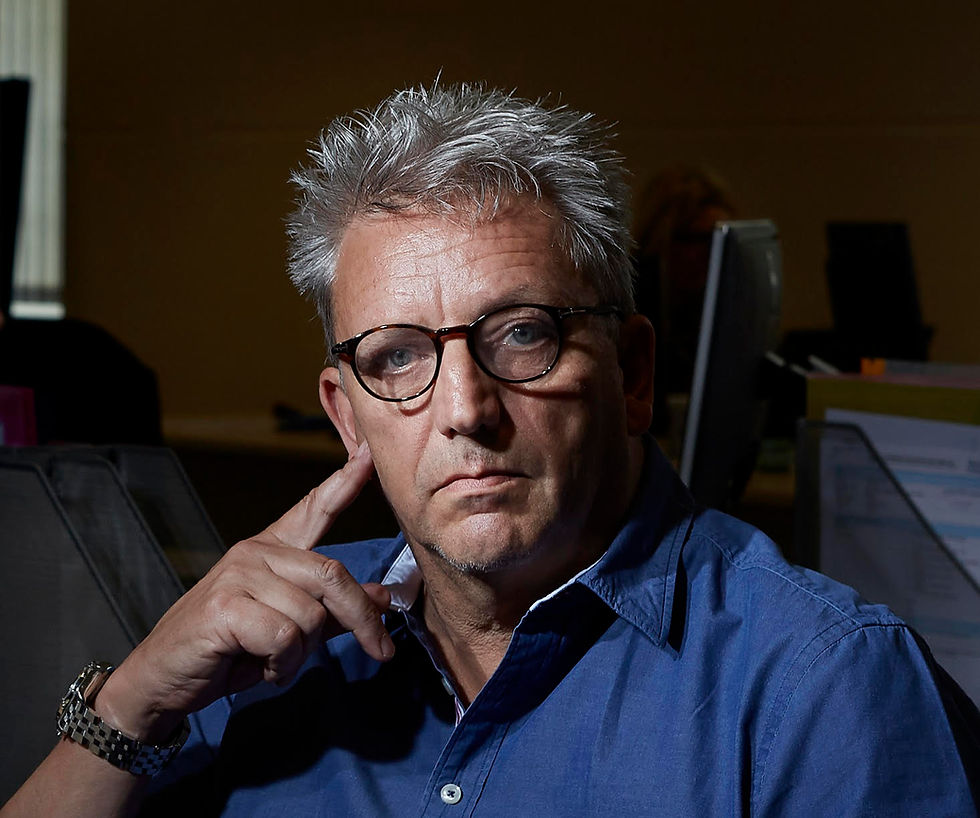IOW - Talking Offshore Survival Suits with Victoria Cameron
- axisaberdeen

- Oct 11, 2020
- 4 min read
Updated: Feb 17, 2023

As part of our ongoing research of the inclusiveness of female employees in an offshore environment, we caught up with Victoria Cameron to chat about her involvement with driving her companies change of survival suits.
Hi Victoria, thanks for speaking with us today.
So, tell us, how did the issue with survival suits come about?
There was a growing frustration within the supply chain team with the pace of change around innovation and new technology for offshore survival equipment. There wasn’t sufficient incentive for change and innovation, with no alternative equipment supplier and therefore no competition. So, we took the decision to look for an alternative supplier – the aviation lead made contact with a supplier who was very experienced in manufacturing and supplying the same type of equipment outside of the UK.
So, the issues were not raised specifically about survival suits alone?
Yes, within the logistics team and due to the Aviation Lead’s proactive approach. The request for change didn’t actually originate from offshore, although there was fairly consistent feedback on issues encountered with the equipment I had previously worked offshore, my aviation lead frequently visited offshore and my predecessor was experienced in the offshore environment too. So, between us we knew the overall experience could be better by implementing newer technology.
What were the steps involved from the point of recognising the issue, to bringing about a resolution?
We knew that we wanted an improved service, so we spoke to the alternative suppliers to decide whether they could meet our needs when it was time for contract renewal. After completing the product comparison, we put a lot of effort into consulting with the offshore workforce and making sure they were comfortable with the change. Implementing standard female survival suits was actually pretty easy once we had done the hard work in gaining alignment to change the supplier. When my aviation lead and I were discussing the new design, the problems around correct fit, he suggested that they could make survival suits to fit females too. As the survival suits and life jackets were being made from scratch, I asked them [the new supplier] if they could ensure that there are female suits as standard too, and they said yes! We took our vantage stats and assessed roughly what size people would be, and the suits were made from that, after the feedback from prototypes had been received.
So, had you not been involved in the team, do you think you would have female survival suits and life jackets today?
I would say no. That’s not a slight on my colleagues, but you don’t know what you don’t know, so having a woman in charge of materials and logistics for the company, and who knew the difficulties of getting the right fitting survival suit, was important. Likewise, my aviation colleague, who is absolutely a feminist, was also really keen to make the change once we realised the opportunity was there.
So, it comes back to having the right people involved, with relevant experience, so that there is that diversity of thought within the process?
Absolutely!
You said it was quite easy to solve, how long did it take to resolve the issue?
It actually took about 14 months from start to finish. This wasn’t a high value monetary contract; it wasn’t a business request; it wasn’t a specific concern raised by offshore, but there was an appetite for change from within the logistics team. So, we built the business case. Once we presented that, it became very evident that it was a sensible business decision to make the change, and we were given the go ahead.
This sounds like an unknown issue for many, how was the wider workforce engaged to take them on the journey?
Of the 14 months, the internal stakeholder engagement took the longest. We had safety reps from offshore across all shifts involved; we had prototype suits made up for people to try, and we fed back comments and suggestions for improvement to the supplier; we created communication material; a rollout plan…The contract value was small, but the management of change was huge! We applied a very similar engagement strategy to the one that the business used for the helicopter change a couple of years previous.
Wow, that is a lot of work, and how was the solution received by the stakeholders?
The reception was enthusiastic! Yes, we got a couple of grumblings, but that’s expected from any change. We engaged early in the process, we had our champions (the safety reps) involved and we were quick to resolve any concerns. Overall, it was very well received.
I have actually been offshore and used these new survival suits that you brought in and I can say I was impressed! I think I said to one of my fellow passengers “This is actually fitting my hips! It might even be a bit too snug!”
Oh, I am glad that you liked them!
Thank you for speaking with us today, Victoria. One last question before you go, what advice would you give to others if they also wanted to make a change similar to this?
Don’t be daunted by the change. This was a pretty straightforward decision, it utilised improved technology and was better for the business. The business case was clear. Stakeholder engagement is key, and management of change is the biggest challenge. Always get the safety representatives involved at the start and take them on the journey with you.
If you have a similar story of how you, your organisation or a colleague made a positive impact on inclusivity offshore, please get in touch with us at info@axisnetwork.co.uk




